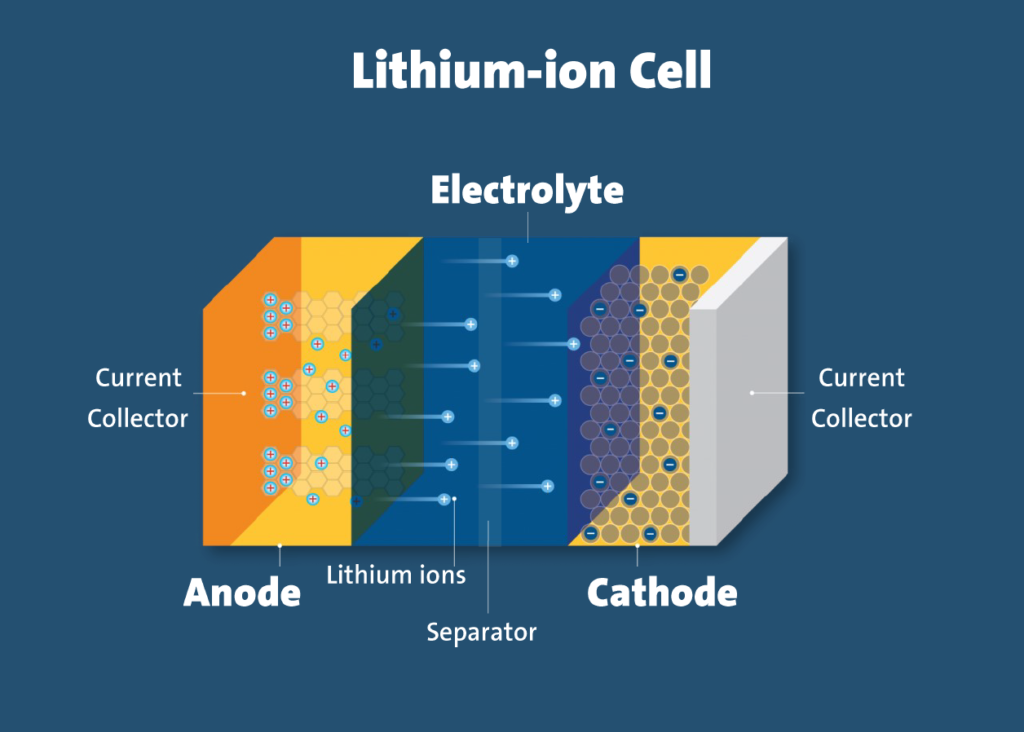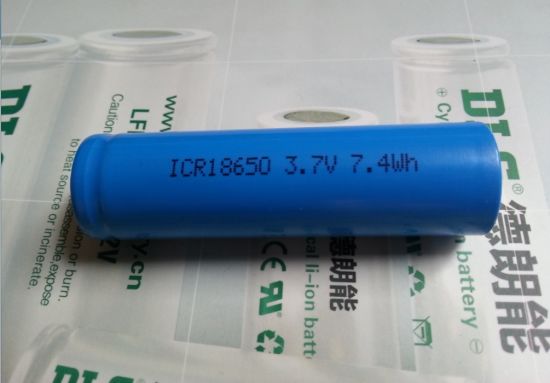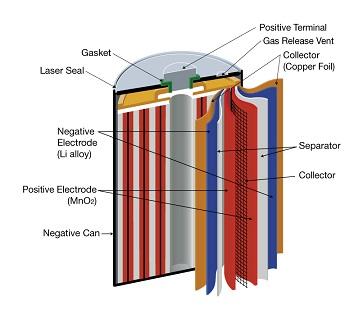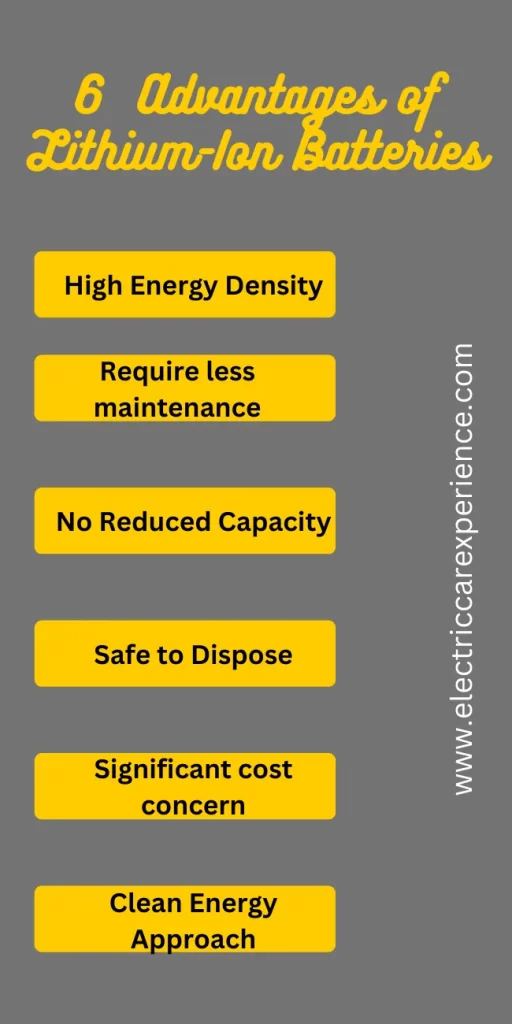
Every local and commercial need for electric vehicles has been met with lithium-ion batteries. The era in which industries paid little attention to the details of their products is long gone. But what would happen to my electric car lithium-ion battery if it was left completely discharged for a year?
Yes, there is a high risk of potential harm and damage to the lithium-ion battery’s progress or performance if it is deeply discharged and left in that condition for an extended period. Lithium-ion batteries offer numerous reliabilities. Still, it is dangerous to drain your battery completely.
Due to its many significant features, lithium batteries have long been in high demand in the business sector. People are curious to learn about the characteristics of lithium batteries, such as their charge and discharge cycles, in determining any potential risks.
[toc]
What is Lithium Battery Discharge?

People frequently use battery discharge to estimate the life cycle of rechargeable batteries. The discharge cycle is finished when there is no longer enough power in the battery to operate it fully. Additionally, lithium-ion batteries have a sizable discharge-to-charge cycle.
A brand-new lithium battery usually has about 30% of the charging when it leaves the factory. This is the standard battery power. In short, the key measures utilize the entire =battery power present in a typical rechargeable battery.
Why couldn't factories charge it entirely, some people wonder? Safety concerns are the cause. Only 5% of the battery power is retained by lithium-ion batteries when discharged. Protected discharge is another name for this procedure. The voltage drops to a specified level during the protected discharge operation.
What will Happen If My Lithium Battery is Over Discharge?
There is a high risk of potential harm and damage to the lithium-ion battery's progress or performance if it is deeply discharged and left in that condition for an extended period. These negative effects are caused by several factors, most of which are connected to the internal chemistry of lithium-ion batteries.
The copper from the anode copper current collector can dissolve into the electrolyte when the lithium battery is discharged below a standard safe voltage.
During charging by chemical reduction, the anode may become attached due to the presence of copper ions. The reaction could result in dendrites. These dendrites could develop during the overcharging from lithium rather than copper.
The dendrites are the least desirable and most necessary components of any battery since they risk causing an internal short circuit.
Lithium-ion Battery Care Tips
The battery's total lifetime is greatly influenced by how it is used. Below are a few ideas listed on how to extend the Li-ion battery's overall life

| 4 Care Tips for Lithium-ion Battery | Description |
|---|---|
| Partial Battery Discharge | When the capacity of your Li-ion battery is between 20% and 30%, you should always recharge it. One of the main causes is that complete discharge can lower the voltage below the recommended 3.2V. This, in turn, can considerably lengthen the battery's life cycle. |
| Avoid charging it completely | The same holds for charging your battery completely. Now, we're not saying to always act in the same way. In case you're going somewhere or planning to keep your gadget somewhere for a while. The battery may always be charged to 100% of its capacity. |
| Pay Attention to Battery Temperature | You may increase the life of your lithium-ion battery to some extent by controlling the temperature. The battery would always become unstable and hazardous to use at higher temperatures. The same is true if you use it below a specific temperature limit. |
| Use Stable Charging Techniques | Each Lithium-ion battery has a unique rating for charging. Going above the limit might still harm the batteries in the era of quick charging. |
What does Tweet say About Lithium-ion Battery Discharge of Electric Cars?
- Latest electric car lithium-ion battery support 3C fast charge, 6C discharge; single 60Ah batteries, support 2C fast charge,4C discharge.
- Reduce the energy consumption by 20-30% with Lithium battery, as the energy in charge and discharge will immediately be retained
What is a Lithium-Ion Battery?

Lithium batteries and lithium-ion batteries are the two types of lithium batteries. Lithium-ion batteries also referred to as lithium batteries, are used in both mobile phones and laptops. Due to their hazard, real lithium batteries are rarely used in everyday electrical equipment.
Rechargeable lithium-ion batteries function mainly through the movement of lithium ions between the positive and negative electrodes. Li+ is embedded and de-embedded back and forth between the two electrodes during the process of charging and discharging.
During charging, Li+ is embedded in the negative electrode through the electrolyte, which is in a lithium-rich condition, and de-embedded from the positive electrode.
In most cases, electrodes for batteries, typical of contemporary high-performance batteries, are made of lithium materials.
How Does a Lithium-Ion Battery Work?

Lithium ions are an important element of the electrochemistry of lithium-ion (Li-ion) batteries, a cutting-edge battery technology. During a discharge cycle, lithium atoms located in the anode are ionized and separated from their electrons.
From the anode, the lithium ions travel through the electrolyte to the cathode, rejoining their electrons and becoming electrically neutral. Since they are so tiny, the lithium ions can pass through a micro-permeable barrier that separates the anode from the cathode. Li-ion batteries may have high voltage and charge storage per unit mass and unit volume in part due to lithium's small size, which places it third in the periodic table after hydrogen and helium.
Numerous materials can be used as electrodes in Li-ion batteries. Lithium cobalt oxide (cathode) and graphite (anode) are the most typical cathode and anode materials. These materials are most frequently found in portable electronic devices like laptops and cell phones.
Other cathode components include lithium iron phosphate and lithium manganese oxide, which are used in hybrid and all-electric cars. Ether (a class of organic chemicals) is frequently used in Li-ion batteries as an electrolyte.
Different Types of Lithium-Ion Batteries
There are six types of lithium-ion batteries:
- Lithium Iron Phosphate

Phosphate is used as the cathode material and a graphitic carbon electrode as the anode in lithium iron phosphate (LFP) batteries. Long life cycles, superior thermal stability, and electrochemical performance are all characteristics of LFP batteries.
- Lithium Cobalt Oxide

Although they have a low specific power, lithium cobalt oxide (LCO) batteries have a high specific energy. This indicates that they can produce electricity for a considerable amount of time but struggle in high-load situations.
- Lithium Manganese Oxide

Lithium manganese oxide is the cathode material in lithium manganese oxide (LMO) batteries. This chemical produces a three-dimensional structure that enhances thermal stability and safety while enhancing ion flow, decreasing internal resistance, and increasing current handling.
- Lithium Nickel Manganese Cobalt Oxide

The advantages of the three primary components utilized in the cathode—nickel, manganese, and cobalt—are combined in lithium nickel manganese cobalt oxide (NMC) batteries. The result of combining them is a chemical compound with a high specific energy. Despite having high specific energy on its own, nickel is unstable. Despite its excellent stability, manganese has low specific energy.
- Lithium Nickel Cobalt Aluminium Oxide
Lithium nickel cobalt aluminum oxide (NCA) batteries have a long lifecycle, good specific power, and high specific energy. They may thus deliver a sizable amount of current for a considerable amount of time.
- Lithium Titanate
The chemical composition of the cathode material differs between each of the previous lithium battery types we have studied. Lithium titanate (LTO) batteries use LMO or NMC as the cathode chemical in place of graphite in the anode.
What are the Advantages of Lithium-Ion Batteries?
Li-ion batteries have several advantages:

- The energy density of these batteries is among the highest available (100-265 Wh/kg or 250-670 Wh/L). Additionally, compared to Ni-Cd or Ni-MH battery technology, Li-ion battery cells have a voltage output of up to 3.6 Volts. Powering high-power applications can deliver a lot of currents.
- Additionally, Li-ion batteries require less maintenance and do not require regular cycling to extend their battery life.
- The memory effect, a negative phenomenon where repeated partial discharge/charge cycles can cause a battery to "remember" a reduced capacity, does not exist with lithium-ion batteries. This is a benefit compared to Ni-Cd and Ni-MH, which also exhibit this effect.
- Moreover, Li-ion batteries have a low self-discharge rate of 1.5 to 2% monthly. They are safer to dispose of than Ni-Cd batteries because they don't contain the hazardous metal cadmium.
- Lithium-ion batteries are also used in electrical power systems in some aerospace applications, such as the newer, more environmentally friendly Boeing 787, where weight is a significant cost concern.
- Li-ion technology holds much promise from a clean energy approach because of its possible uses in battery-operated vehicles. The Nissan Leaf and the Tesla Model S, two of the most popular electric vehicles today, rely on Li-ion batteries for fuel.
What are The Disadvantages of Lithium Ion Batteries?
- High voltages can harm lithium-ion batteries because they tend to overheat. This sometimes results in thermal runaway and combustion. Significant issues have resulted from this, most notably the fleet of Boeing 787s being grounded following reports of onboard battery fires.
- Li-ion batteries need safety systems to regulate internal pressure and voltage, which can sometimes add weight and reduce performance.
- Li-ion batteries can age, which means they can lose capacity and frequently stop working after a while.
- Their price, which is about 40% more than Ni-Cd, is another obstacle to their general adoption. A crucial part of the technology's present research involves addressing these problems.
Practical Usage of Lithium Ion Battery
It's better to get immediately into the Li-ion battery's actual use now that we have finished discussing its mechanism of operation. We would try to maintain the part as clear as possible for our readers' benefit.

| Practical usage of Lithium-ion Battery | Description |
|---|---|
| Nominal Voltage | The actual voltage is called the nominal voltage that the Li-ion battery is rated at. The default nominal voltage is always set to 3.6V, irrespective of the manufacturer. |
| Full Discharge Voltage | Any Lithium-ion battery should not have a voltage drop of more than 3.2V. This has a number of drawbacks of its own. The battery's internal resistance may change or sustain long-term harm. |
| Milli Ampere Hour (mAh) | The mAh stands for milliamperes. This is the criteria used to rate the Li-ion battery's capacity. Therefore, the mAh rating has a direct relationship with the battery's overall runtime. |
| C Rating | The C Rating is another crucial factor to consider when purchasing a lithium-ion battery. The C Rating indicates the maximum current that can be extracted from the battery. |
Conclusion
Conclusion#1: Applications of lithium-ion batteries
Different consumer goods, including headphones, laptops, mobile devices, and more, are powered by lithium-ion batteries.
Conclusion#2: Features of lithium-ion batteries
When compared to conventional batteries, lithium-ion batteries tend to have a lower self-discharge rate, higher energy density, and greater voltage capacity, making them the go-to option for military and aerospace applications.
Additionally, they are stable and can be recharged up to 100 times, but if they are left discharged for an extended period of time, there is a great danger of potential harm and damage to the lithium-ion battery's health or performance.
FAQs
What is the use of a Lithium - Ion Battery?
Due to their high energy per mass compared to other electrical energy storage methods, lithium-ion batteries are currently employed in most portable consumer gadgets, including cell phones and laptops.
How durable are Lithium - Ion Batteries?
A lithium-ion battery's usual lifespan is typically predicted to be between two and three years, or 300 and 500 charge cycles, whichever comes first. One charge cycle is when a device is entirely charged, fully discharged, and then fully recharged.
Are special chargers required for Lithium - Ion Batteries?
It is unnecessary to switch from the lead acid battery chargers you have been using to lithium battery chargers. The required charger is a lead acid charger.
Who are the top 5 producers of Lithium?
90% of the world's lithium output comprises China, Chile, and Australia. With a 5.6% market share, Argentina is the fourth-largest lithium producer, and Brazil is ranked fifth with a 1.4% portion of the world's lithium reserves. With a 0.8% worldwide share each, Portugal and the US tie for sixth place.
What is the lifespan of lithium - Ion Battery?
Most manufacturers anticipate lithium-ion batteries to last at least five years or 2,000 charging cycles. However, lithium-ion batteries can operate for up to 3,000 cycles if handled with care and utilized in the right circumstances.u003cbru003e
Posts Related To Electric Car Batteries.
- Tesla Battery Degradation In Cold Weather
- Tesla Model 3 SR+ LFP Battery Capacity Per Year
- Can electric car batteries explode within a year?-An ultimate guide 2024
- How Many Years Will Tesla Model 3 Battery Last?
- IRA Benefits: Top 6 EV Tax Credits to Consumers & U.S. Automakers- A complete guide 2024
- Tesla Model 3 Energy Saving Mode
- Do you own an electric car battery?
- Electric Car And Tesla Range Loss in Traffic Jam
- Range Of Electric Cars When Every System Is Turned On
- Top 10 Benefits of “Battery Passports” for Electric Cars- A complete guide 2024
- Tesla Battery Heater in Extreme Cold (Model S, Model X Model Y)-Complete Guide
- How Accurate Are Electric Car Ranges (Tesla, Nexon, Nissan, and Chevy)
- Do Electric Cars Have More Than One Battery
- Is 220 Miles Of Range Enough For Electric Car?
- Top 10 Tesla’s cobalt-free battery strategy by Elon Musk- An Ultimate Guide 2024
